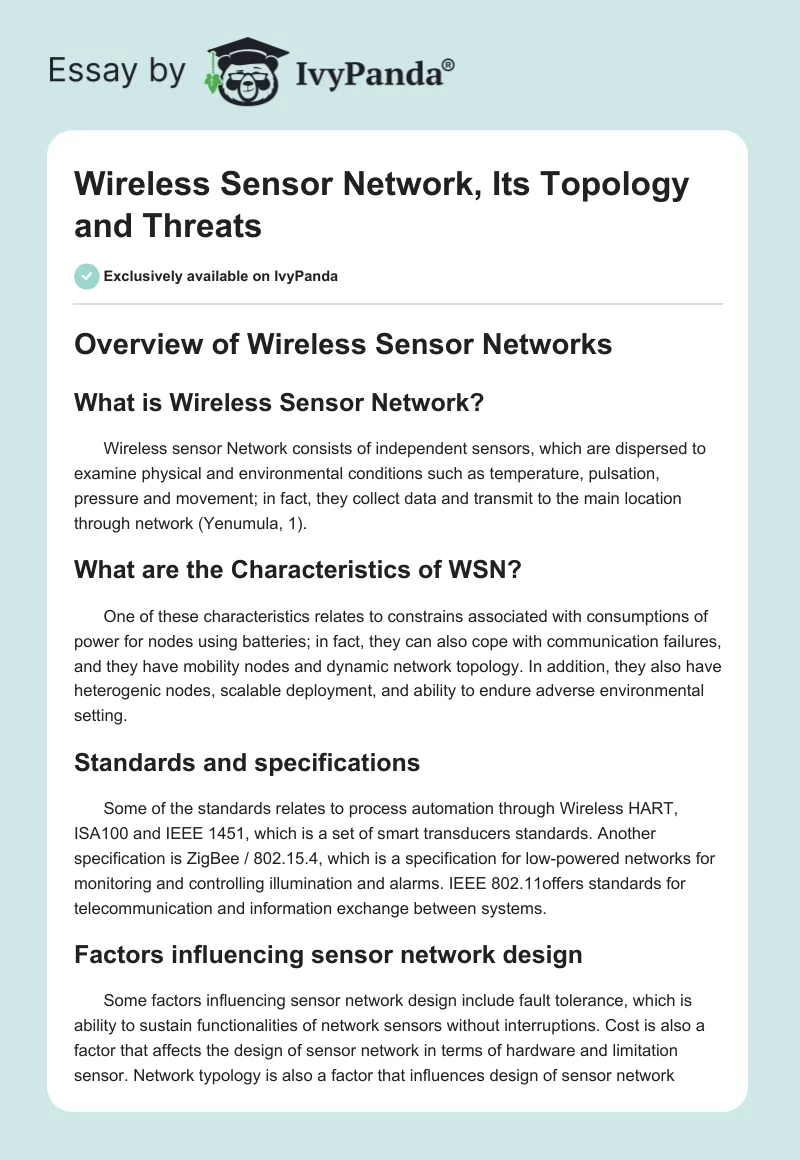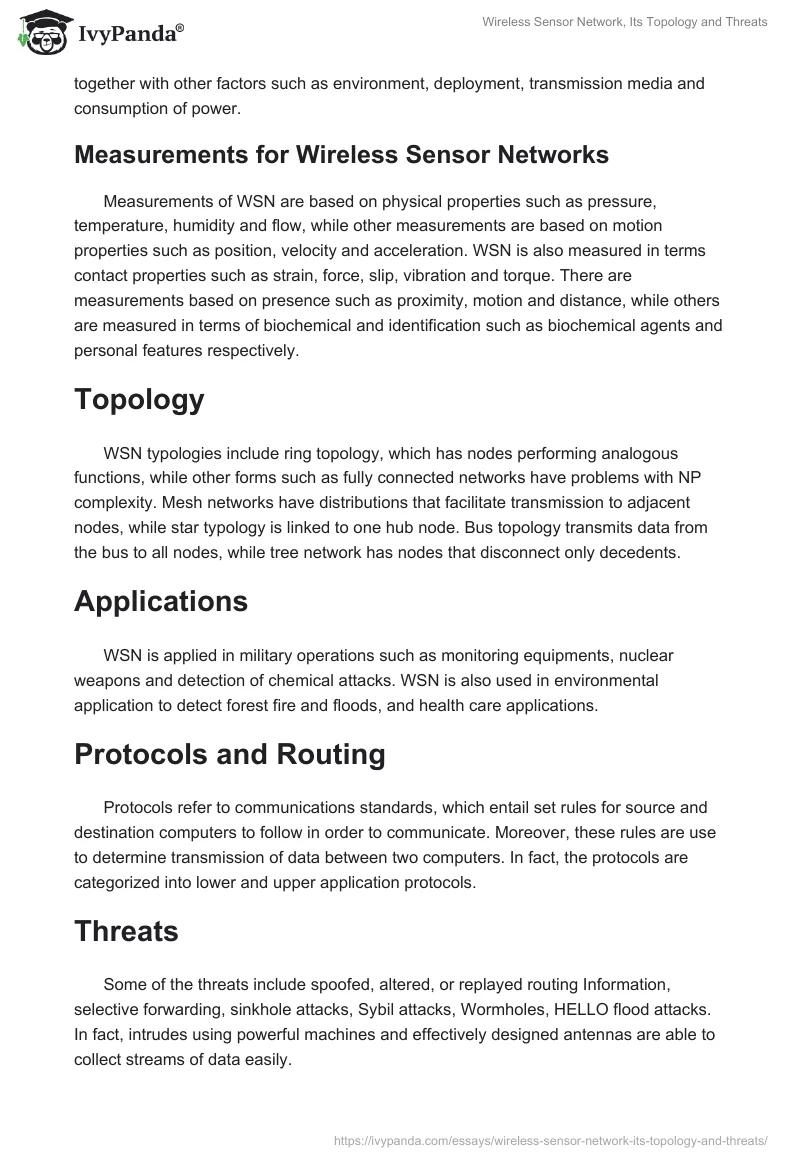Overview of Wireless Sensor Networks
What is Wireless Sensor Network?
Wireless sensor Network consists of independent sensors, which are dispersed to examine physical and environmental conditions such as temperature, pulsation, pressure and movement; in fact, they collect data and transmit to the main location through network (Yenumula, 1).
What are the Characteristics of WSN?
One of these characteristics relates to constrains associated with consumptions of power for nodes using batteries; in fact, they can also cope with communication failures, and they have mobility nodes and dynamic network topology. In addition, they also have heterogenic nodes, scalable deployment, and ability to endure adverse environmental setting.
Standards and specifications
Some of the standards relates to process automation through Wireless HART, ISA100 and IEEE 1451, which is a set of smart transducers standards. Another specification is ZigBee / 802.15.4, which is a specification for low-powered networks for monitoring and controlling illumination and alarms. IEEE 802.11offers standards for telecommunication and information exchange between systems.
Factors influencing sensor network design
Some factors influencing sensor network design include fault tolerance, which is ability to sustain functionalities of network sensors without interruptions. Cost is also a factor that affects the design of sensor network in terms of hardware and limitation sensor. Network typology is also a factor that influences design of sensor network together with other factors such as environment, deployment, transmission media and consumption of power.
Measurements for Wireless Sensor Networks
Measurements of WSN are based on physical properties such as pressure, temperature, humidity and flow, while other measurements are based on motion properties such as position, velocity and acceleration. WSN is also measured in terms contact properties such as strain, force, slip, vibration and torque. There are measurements based on presence such as proximity, motion and distance, while others are measured in terms of biochemical and identification such as biochemical agents and personal features respectively.
Topology
WSN typologies include ring topology, which has nodes performing analogous functions, while other forms such as fully connected networks have problems with NP complexity. Mesh networks have distributions that facilitate transmission to adjacent nodes, while star typology is linked to one hub node. Bus topology transmits data from the bus to all nodes, while tree network has nodes that disconnect only decedents.
Applications
WSN is applied in military operations such as monitoring equipments, nuclear weapons and detection of chemical attacks. WSN is also used in environmental application to detect forest fire and floods, and health care applications.
Protocols and Routing
Protocols refer to communications standards, which entail set rules for source and destination computers to follow in order to communicate. Moreover, these rules are use to determine transmission of data between two computers. In fact, the protocols are categorized into lower and upper application protocols.
Threats
Some of the threats include spoofed, altered, or replayed routing Information, selective forwarding, sinkhole attacks, Sybil attacks, Wormholes, HELLO flood attacks. In fact, intrudes using powerful machines and effectively designed antennas are able to collect streams of data easily.
Future and Challenges
In the future, there are definitive limitations associated with developing a multi-hop routing topology around rigid set of base stations. In fact, nodes situated in within one or two hops of base stations are appealing for compromise. However, there are challenges relating to building trust-based security model that is flexible, and ability to transmit information.
Works Cited
Yenumula, Reddy. “Security in Wireless Sensor Network.” SENSORCOMM. Grambling State University Grambling. 2011. Web.


